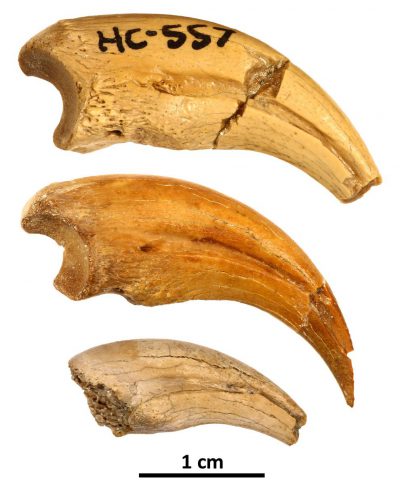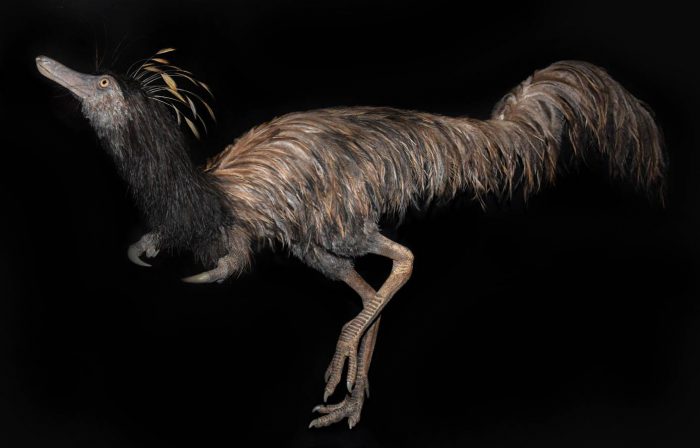The knowledge that there were feathers on dinosaurs is not a new thing. Same with the fact that dinosaurs evolved into modern birds.
But that doesn't mean that these connections don't still fascinate and surprise us. Especially as more and more dinosaurs are found that resemble creatures of the here and now.
Meet Trierarchuncus prairiensis, whose name means 'Captain Hook of the Prairie'. Though this name makes it sounds like some prehistoric pirate, it was actually similar to many modern flightless birds.
First, about that name

A series of claws from fossils of this dinosaur show how the claws grew as the animal aged. (Fowler et al, Cretaceous Research, 2020)
Of course, we can't just drop that this animal is called the 'Captain Hook of the Prairie' and not tell you why!
A series of their fossils were discovered in the Hell Creek Formation, an area well known for its excellent fossils, that stretches across Montana, Wyoming, and North and South Dakota. The fossils had a distinct trait: two short, stubby limbs that each ended in a single hooked claw.
Daily sketch: Trierarchuncus prairiensis Fowler 2020, newly described late Cretaceous #alvarezsaurid, here doing some goofy display dance. #sciart #paleoart #dinosaur pic.twitter.com/gt8yZ6WIsW
— Filipe Martinho (@martinhfilipe) July 13, 2020
Well, before you could say 'Shiver me timbers' a paleontologist had suggested naming the creature after Captain Hook, the famous hook-for-a-hand villain in Peter Pan. Great choice!
As for what these limbs could do, scientists believe they weren't just for show. Several fossils of different ages of the dinosaur show the claws grew in size and strength over time. They likely would've been used to tear apart rotting woods and nests in search for insects to eat. That's because T. prairiensis had the kind of small, spiky teeth that are common in insect-eating reptiles.
Feathered cousin
An emu. (Getty Embed)
While this late Cretaceous dinosaur indeed had teeth rather than a beak, if you saw it wandering around a zoo, it wouldn't seem that out of place.
Current interpretations of these creatures suggest an animal about three metres (10 feet) long with fluffy plumage along its body and tail. Three metres is small for a dinosaur, but big for a bird. And indeed, some of the largest birds today—such as emus and cassowaries—look pretty similar to our ancient captain.
At least what scientists think the dinosaur looked like. Though many dinosaurs have been definitively proven to have feathers, it's still tricky business proving which species did or didn't. That's because fossils are incomplete. (Hey, they're tens of millions of years old—most of us can't even keep a LEGO set for a year before some bricks go missing!) But since T. prairiensis belongs to a family of dinos (maniraptorans) that has a bunch of feathered animals, it's pretty safe to assume that Captain Hook had some fantastic plumage.
As for whether or not it liked sailing, owned a ship called the Jolly Roger, and was afraid of crocodiles, well, further research is needed!
 Dinosaur? Or Bird? It's getting harder and harder to tell! (Boban Filipovic)
Dinosaur? Or Bird? It's getting harder and harder to tell! (Boban Filipovic)









